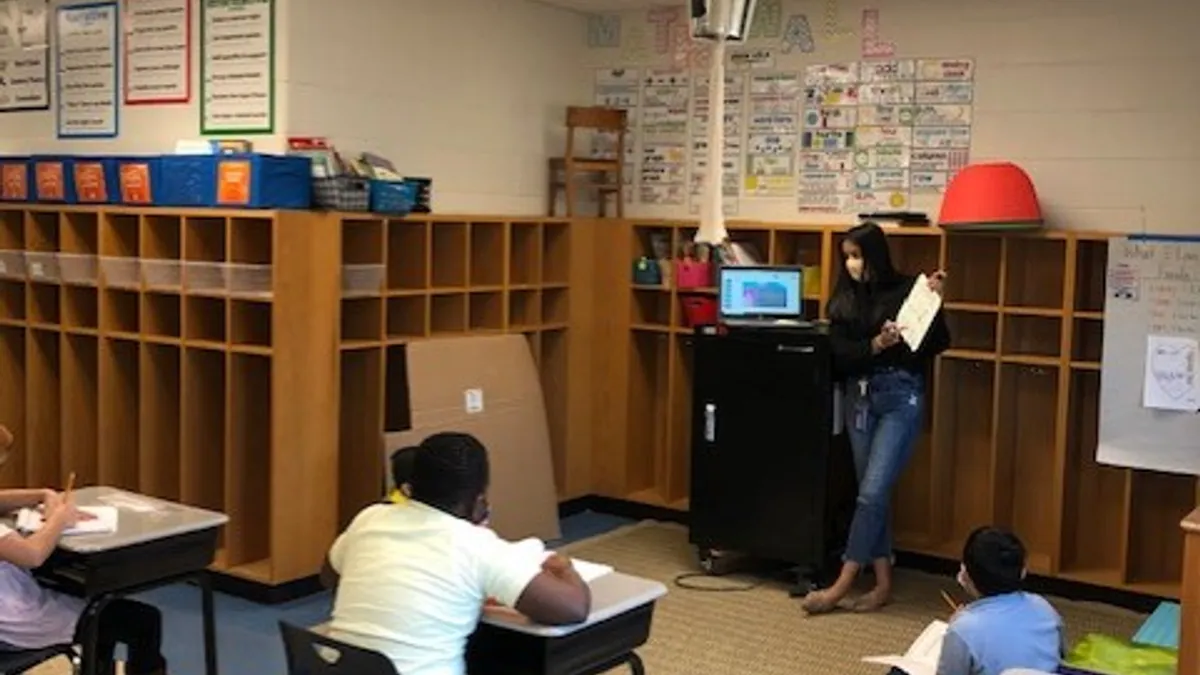Over the past year of disrupted education, teachers and administrators have shared examples of COVID-19 response strategies, best practices and collaborations within their professional networks. Reflecting back on what they’ve learned during this experience, they also say they have been motivated by and have drawn the greatest inspiration from the students themselves.
From the littlest of learners to high school seniors, educators say students have continued studying under the threat of a deadly virus, during a tumultuous election season and while the country struggles to address systemic racism. Many students experienced additional serious challenges such as fragile financial situations and sickness and death in their families, teachers say.
Students’ perseverance through this difficult time has fueled educators’ efforts to keep them connected to school. Several teachers and administrators also said it was students’ acceptance of missed milestones and traditions — all the parts of school that make it more fun, such as holiday pageants and homecomings — that also inspired them to keep working harder to make this year as impactful and meaningful as possible.
It’s not just teachers and administrators who viewed students with newfound admiration this year. State and federal education professionals said they’ve absorbed the stories of students’ struggles and gained a new level of empathy for all they have been through and the grit they display.
On his first day as U.S. secretary of education, Miguel Cardona wrote in an essay published by USA Today, “If I’ve learned anything in my career as an educator, it’s this: With the right support, students are remarkably resilient. America’s students have risen to this unprecedented occasion and adapted in ways that inspire me as an educator and father.”
Here, three teachers shared with K-12 Dive how students have inspired their work this year.
Jennifer Greene-Gast, Bastrop Independent School District in Texas
Greene-Gast, an academic intervention coordinator, substituted for one virtual kindergarten class last year. As she was leading the class in a lesson, one boy raised a digital hand and, when Greene-Gast let him speak, said a classmate had been bumped off the call and was in the waiting room. When Greene-Gast asked the kindergartner how he knew that a student had left the call and was waiting to reenter, the boy said, “He texted me.”
“Oh my gosh. It was wonderful. I had the best time with them, and I’d do it again,” Greene-Gast said.
Gina Bialas, Mitchell School District in South Dakota
Gina Bialas, a special education teacher, was ready for a rough start to the school year when she began teaching in-person at a new school in the fall. Instead, her high school life skills students, some of whom are non-verbal and require intensive supports, were very willing and ready to be back at school.
“These students had every reason in the world to come back and display multiple behaviors — a new teacher, no closure with their previous teacher, new regulations with COVID restrictions, not having structured school for nearly 6 months,” Bialas said in an email. Her students’ eagerness to be back at school, however, gave her courage.
Bialas, who battled COVID-19 and recovered during the school year, said she’s felt the happiest and most confident professionally this school year. “I think I've found my place with this group of students, and they make me want to jump through the hoops, go through the extras and do the extra work, because them wanting to be here makes me want to work that much harder,” she said.
Nisha Patel, Indianapolis Public Schools
Patel, a teacher of 2nd grade English learners, has one student who immigrated to the U.S. shortly before COVID-19 arrived stateside. At the beginning of this school year, when all Patel’s students were learning virtually, the young student, who didn’t speak any English, kept her computer camera off and was not engaging in online learning at all.
“I was sad and at a loss,” Patel said. When students started learning in-person in October, Patel’s goal was to just have the student use one word of English regularly and correctly. Now, after four months of in-person instruction and individualized support, the girl is confident, happy and using many English words accurately and frequently. She tells her teacher every day, “Have a good day, Ms. Patel.”
“More than myself, I am proud of her,” Patel said. “This is what makes me want to do my job well.”








 Dive Awards
Dive Awards





